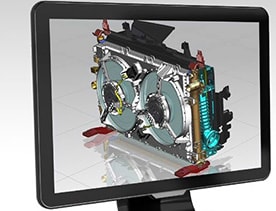MacGruber22
Structural
- Jan 30, 2014
- 802
Preface: this is not new construction - it is support for deconstruction of a crane that needs to cross a defunct bridge to be disassembled.
I have a 5'x5' concrete pile cap girder (pier) spanning 23' that is 200% over-stressed, and I am going to place a steel girder on top of it to span in between piles. I have fairly heavy loads (two 500 kip spaced 3-ft from each other (on rail), with the rail near the center of the pier span) I am trying to look at this in two ways...
1. Size the steel beam to carry all of the load to the pile caps, and provide space for the beam to deflect without touching the existing concrete pier.
2. Place the steel beam directly on the concrete pier and distribute the load to the steel beam AND concrete pier girder based on their relative stiffness. The idea would be to generate a steel beam stiffness that removes enough load from the concrete girder so that the girder is not over-stressed. I am limited by a 36" deep steel beam.
Thoughts? Is #2 valid? If so, I am wondering is the steel beam section required (for stiffness) will be more than needed for the strength to carry the two point loads own its own (without the concrete girder supporting any load). I hope I am being clear. Thanks!
I have a 5'x5' concrete pile cap girder (pier) spanning 23' that is 200% over-stressed, and I am going to place a steel girder on top of it to span in between piles. I have fairly heavy loads (two 500 kip spaced 3-ft from each other (on rail), with the rail near the center of the pier span) I am trying to look at this in two ways...
1. Size the steel beam to carry all of the load to the pile caps, and provide space for the beam to deflect without touching the existing concrete pier.
2. Place the steel beam directly on the concrete pier and distribute the load to the steel beam AND concrete pier girder based on their relative stiffness. The idea would be to generate a steel beam stiffness that removes enough load from the concrete girder so that the girder is not over-stressed. I am limited by a 36" deep steel beam.
Thoughts? Is #2 valid? If so, I am wondering is the steel beam section required (for stiffness) will be more than needed for the strength to carry the two point loads own its own (without the concrete girder supporting any load). I hope I am being clear. Thanks!





![[idea] [idea] [idea]](/data/assets/smilies/idea.gif)
![[r2d2] [r2d2] [r2d2]](/data/assets/smilies/r2d2.gif)

![[afro2] [afro2] [afro2]](/data/assets/smilies/afro2.gif)